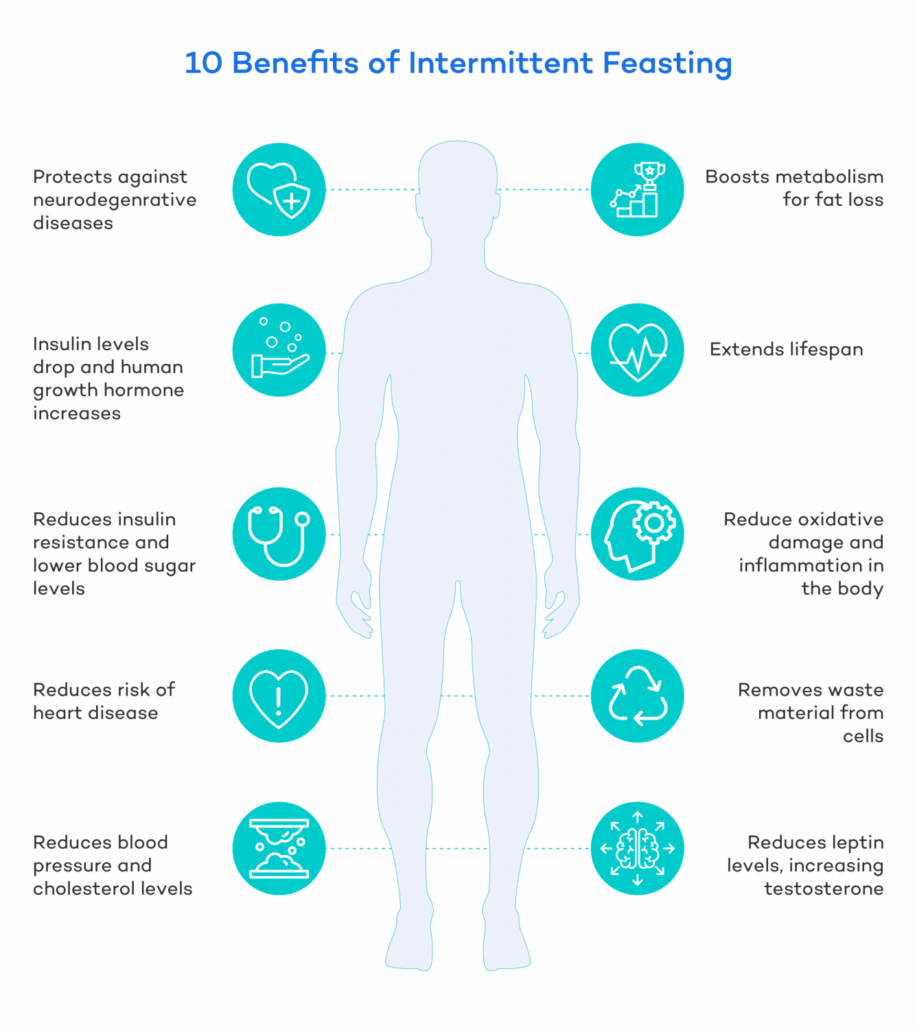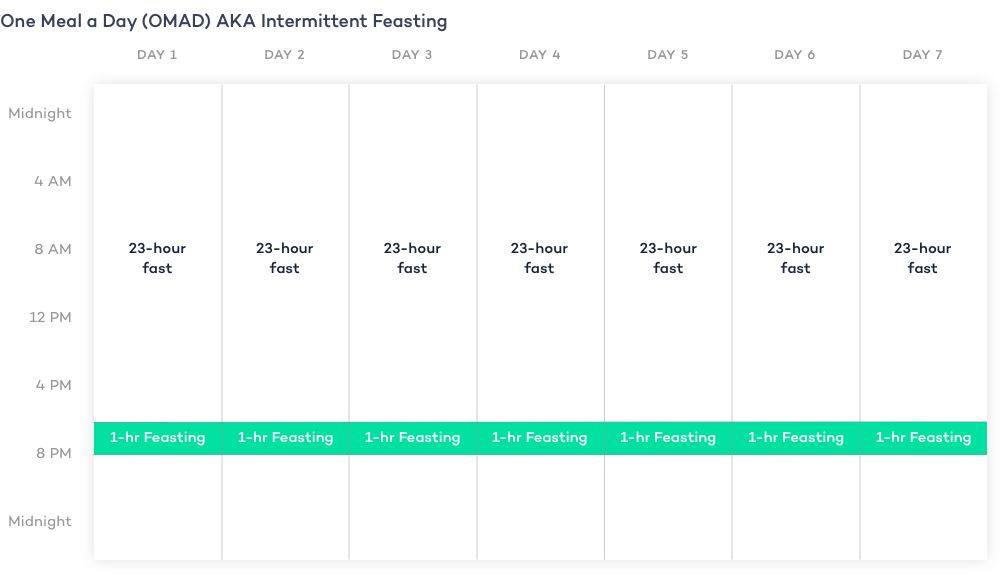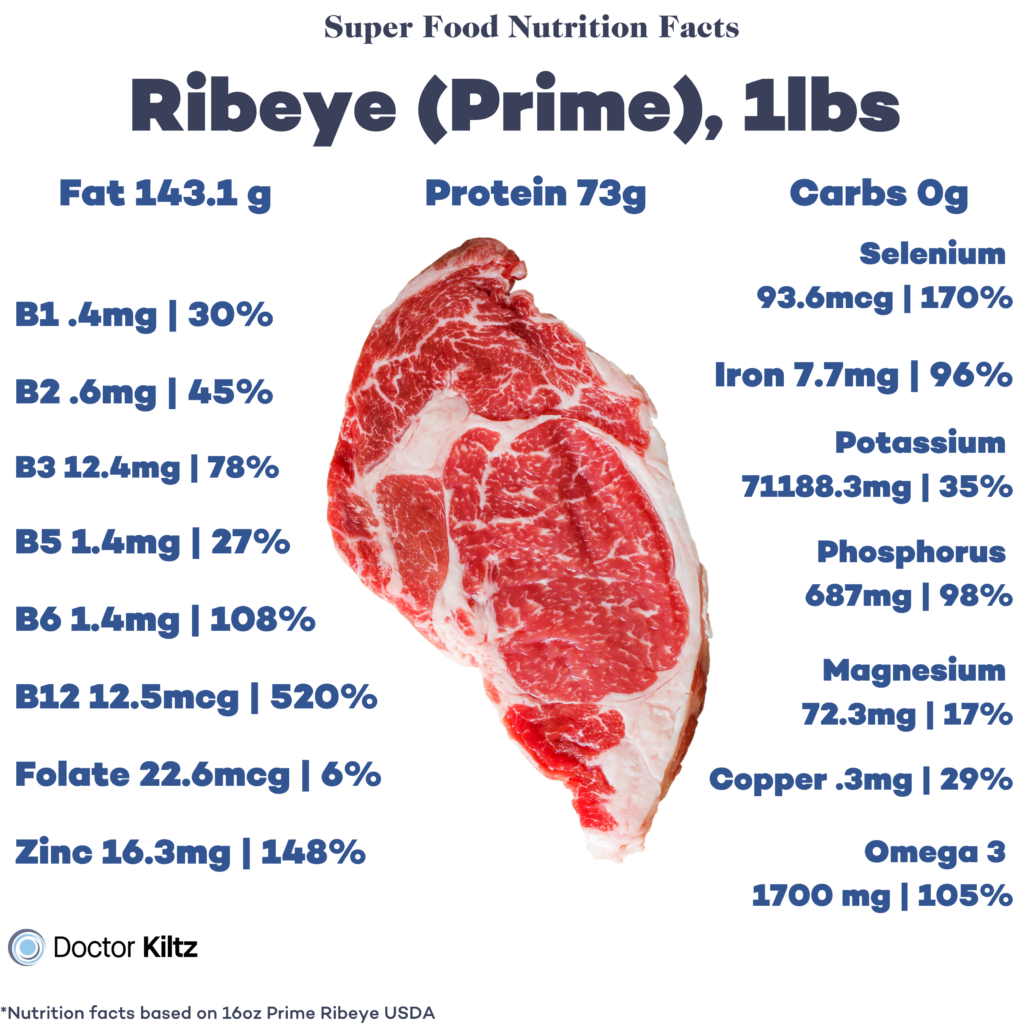We include products in articles we think are useful for our readers. If you buy products or services through links on our website, we may earn a small commission.
How To Fast: 8 Tips for Safe and Effective Intermittent Fasting

In this guide on how to fast, we’ll explore the art of fasting and provide tips to safely and effectively incorporate fasting into your daily routine.
Throughout history, fasting has been embraced by various cultures and revered for its remarkable benefits. But only recently has fasting enjoyed a science-backed revival.
Some of the studied benefits of fasting include:
- Promotes weight loss [1]
- Protects against neurodegenerative disease [2]
- Supports cognitive performance [3]
- Increases in HGH (human growth hormone) [4]
- Increases BDNF, a hormone that supports the formation of new neural networks [5]
- Activates autophagy–a process of cellular repair and renewal [6]
- Reduces inflammation [7]
- Supports gene expressions linked to longevity [8]
Now let’s turn to the strategies that will help you make these potential benefits become a reality in your life.

Table of Contents
1. Find the Right Fasting Method for You
There are numerous intermittent and prolonged fasting methods to choose from. So the first task when figuring out how to fast, is what fasting method are we talking about?
Since the benefits of fasting change hour by hour, generally speaking, the greatest benefits will occur with more intense fasts.
But there’s a tradeoff. Prolonged fasts of 24 hours to 5 days can only be undertaken occasionally.
While intermittent fasting approaches like time-restricted eating, circadian rhythm fasting, 16/8, and OMAD (One Meal A Day), can be practiced daily and long-term.

Listed from gentle to intense, some of the most popular and effective methods include:
- 12-hour fast: Also known as the “brunch fast,” it is barely worth mentioning. You may eat fewer calories by skipping breakfast, but you won’t activate autophagy and beneficial gene expressions behind most of the benefits of fasting.
- 16/8 fast: This approach calls for eating within an eight-hour window and restricting caloric intake for 16 hours. This is the minimum amount of fasting time to trigger mild autophagy while giving your digestive system a moderate period to reset and heal.
- Time-restricted eating: like the 16/8 fast, time-restricted eating is a short-term fast (usually 12-18 hours), and differs only in that it calls for eating within a limited number of hours during daylight. The rationale is that you need to fast overnight in order to take advantage of metabolic processes primed by your internal “body clock” or circadian rhythm.
- 20-hour fast: The 20-hour fast is just that–don’t eat for 20 hours and consume all of your daily calories within a 4-hour window. This approach turns up the dial and the hormone-balancing and cellular renewing processes of a 16-hour fast.
- OMAD: One of Dr. Kitlz’s three pillars of health and wellness, OMAD is the most intensive, and potentially beneficial, daily fasting protocol. As the name suggests, OMAD calls for eating all of your calories within one feast of a meal. Most OMAD dieters a lot around an hour for “feeding.” As you can imagine, getting all your macros and calories in one meal means you have to focus on extremely nutrient-dense foods–which means that healthy eating is built into this approach.
- 24-hour fast: Most people practicing 24-hour fasts do it once a week. The fasting period typically begins at sundown on the first day and ends at the same time the next day. This is one of the most studied fasting protocols–which is not a coincidence. The most powerful fasting benefits appear during this method. 24-hour fasts have been shown to stimulate intestinal stem cells that heal leaky gut, stimulate autophagy processes that reduce inflammation, and to reduce inflammatory white blood cells called monocytes. [9]
- 36-Hour Fast (Monk Fast): Basically an extension of the 24-hour fast, and practiced once a week.
- 5-Day Fast: Considered an intensive fasting protocol, most people work their way up to the 5-day fast from the OMAD daily protocol and use it as a major metabolic reset once or twice a year.
2. Consume Nutrient Dense, Low-Toxin, Whole Foods
Most people think that how to fast has only to do with not eating, but this view leaves out an extremely important variable–the food you eat before and after a fast.
Since fasting promotes stem cell production and cellular recycling, it’s critical to fertilize this cellular activity with nourishing foods and to avoid foods that can damage or interfere with this process.
This means cutting out most foods on the Standard American Diet, including all processed foods, added sugars, and vegetable oils.
During daily fasts, and at least three days before any prolonged fast, focus on these foods:
- Red meat (grass-fed and pasture raised when possible): red meat has an optimal fatty acid profile, complete proteins, and nearly every essential micronutrient you need to thrive.
- Organ meats: The most nutrient-dense foods on earth, organ meats will aid your body with critical fat-soluble vitamins, including A (retinol), D, E, and K2, known as the “activator X” nutrient that helps your body utilize many other vitamins. While the extremely high B vitamin content can prevent your resting metabolic rate from stalling during a fast [10]
- Eggs
- Butter
- Tallow
- Low-carb yogurt
- Bone broth
- Oysters, Salmon roe fatty fish, and other seafood
- Low-carb fruit like berries
- Properly-prepared low-carb vegetables
- Low-toxin veggies like sweet potatoes

Consuming these healthy whole foods (especially fatty animal products), combined with intermittent fasting, simulates the dietary habits that our ancestors evolved on for nearly 2 million years before the dawn of agriculture.
The fact that human physiology and metabolism were formed on this fasting/feasting pattern is a key to understanding why realigning your diet with this pattern is so beneficial. Essentially we’re feeding our body with the foods and at the cadence it was designed by nature to thrive on.
3. Stay Hydrated

On longer fasts, or when you’re combining fasting with a low-carb, high-fat diet, your body will begin flushing fluids as it unlocks glycogen (a type of carbohydrate) stored in your muscles. As your insulin drops and fluids flush, it becomes important to maintain electrolyte balance and proper hydration.
The best way to stay hydrated and balanced is to drink true mineral water.
Many of the minerals in “mineral water” are electrolytes–charged particles essential to many processes in the body like nervous system impulses and muscle contraction. [11]
Other zero-calorie hydrating fluids include black coffee, unsweetened herbal, and black tea. [12]
If you are a coffee drinker, be sure to choose certified toxin-free coffee to avoid common toxic molds called mycotoxins.
4. Plan Your Meals

One of the benefits of fasting is that most people eat fewer meals, which means less meal prep. But it can also be a great opportunity to plan ahead.
Having a solid meal plan that combines premade and fresh whole foods will make it much easier to resist reaching for unhealthy foods when your hunger reaches its peak.
For that matter, one of the keys to effective meal planning is cleaning all processed foods, sweets, and junk out of your cupboard.
The following example of a seven-day meal plan can be adapted to a carnivore diet by cutting out the fruits and veggies. It can also be aligned with a ketogenic lifestyle by consuming only small amounts of low-carb fruits and veggies.
If you’re practicing a more gentle
| Day 1 | Day 2 | Day 3 | Day 4 | Day 5 | Day 6 | Day 7 |
|---|---|---|---|---|---|---|
| Ribeye Steak and Eggs + raw oysters Kiwis Chocolate Sweet potato | Eggs and bacon + Salmon pan-fried basted with butter Low-toxin veggies and fruit | 80/20 ground beef covered in butter and sour cream + soft boiled eggs
Low toxins veggie and fruit | Braised Pork belly + Raw oysters Low-toxin veggies and/or fruit | Picanha steak with blue cheese butter + Duck Liver Foie Gras Low-toxin veggies and/or fruit | Proscuitto and cheese charcuterie + Rack of lamb dipped in own fat drippings and butter
Low-toxin veggies and/or fruit | Beef short ribs + Prawns/shrimp dipped in butter Low-toxin veggies and/or fruit |
5. Build Up to Longer Fasts
Like most things, fasting requires training and conditioning.
Allow your body to adapt to the different hormonal and metabolic needs of fasting by building up to longer fasts.
6. Listen to Your Body
If you’re new to fasting, you’ll likely have some temporarily uncomfortable symptoms–this is normal.
But pay attention to acute and prolonged feelings of dizziness, extreme fatigue, and lightheadedness.
Intense side effects are likely an indication that you need to improve your pre-post fasting food choices, improve hydration and electrolyte intake, and/or reduce your fasting duration.
7. Stay Active

How to fast can have a lot to do with how you move your body.
Low-impact movement can help your metabolism shift into deeper fat-burning mode more quickly. Most unpleasant side effects occur as your body makes this transition, so speeding it up with physical movement can make fasting a more comfortable, and therefore a more sustainable, practice.
Low-impact exercises like yoga, walking, cycling, and swimming are great choices.
8. Be Patient
As you can see from this list there are a number of factors that you’ll need to dial in when figuring out how to fast.
Adjusting these variables to fit your physiology and lifestyle can take some time.
Additionally, even if the duration, food choices, hydration, etc, are perfect, it may still take some time for your body to adjust.
Be patient with yourself, and don’t get down. If you’re having trouble getting into it, you may want to join and get support from an intermittent fasting online community or forum.
For most people, a little consistency and stick-to-it-ivness is all it takes to get the health benefits rolling.
How to Fast: The Bottom Line
Fasting is an ancient practice for health and well-being. In its recent revival, fasting has been shown to provide many powerful health benefits ranging from cellular renewal and reduced inflammation to improved cognition.
But there’s not just one way to fast. So figuring out how to fast has a lot to do with your lifestyle, health goals, and physiology.
Choosing the right fasting method, consuming nutrient-dense whole foods, staying hydrated, and physical activity are all important aspects to explore for people learning how to fast.
With a little bit of patience and determination, fasting can be a remarkably transformative addition to your holistic lifestyle.















